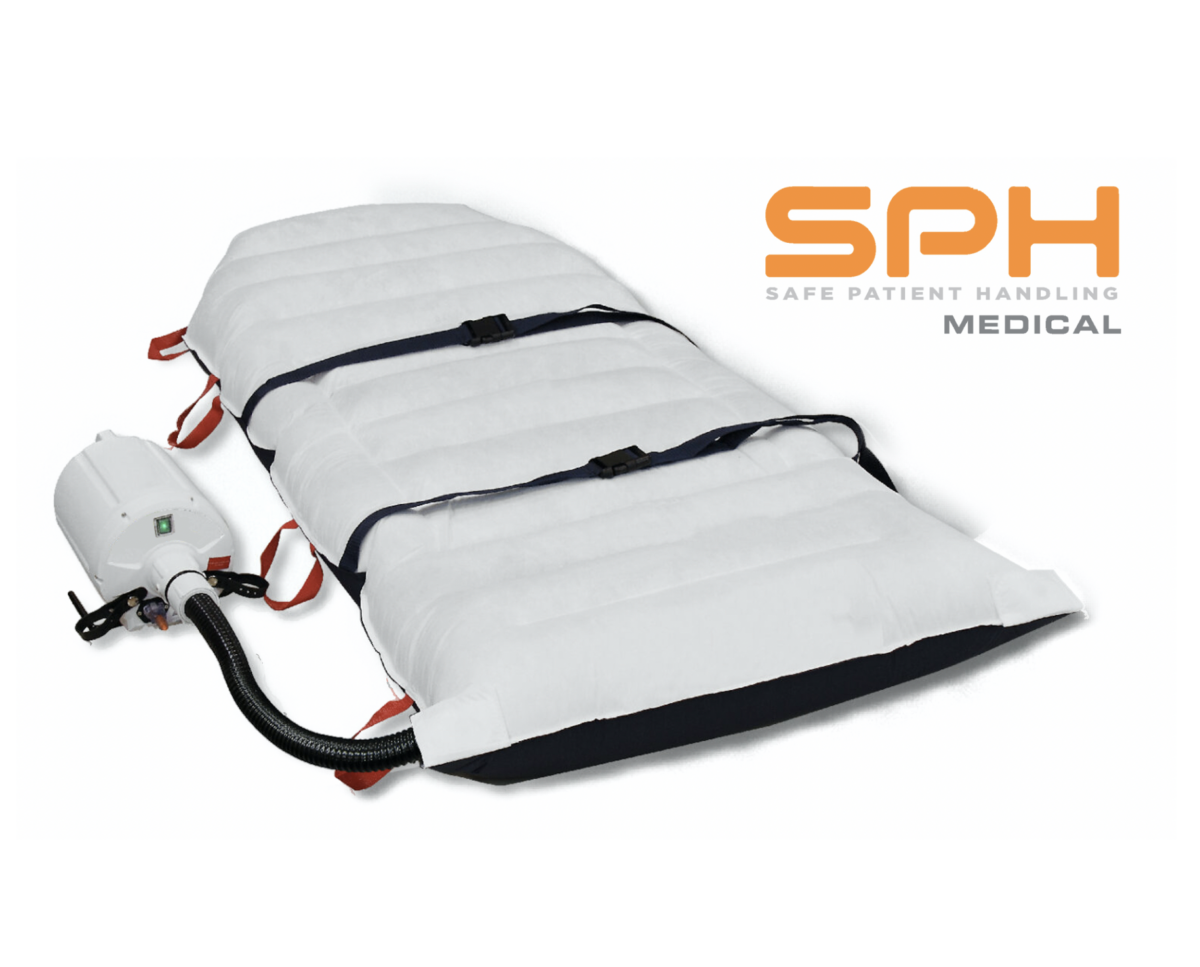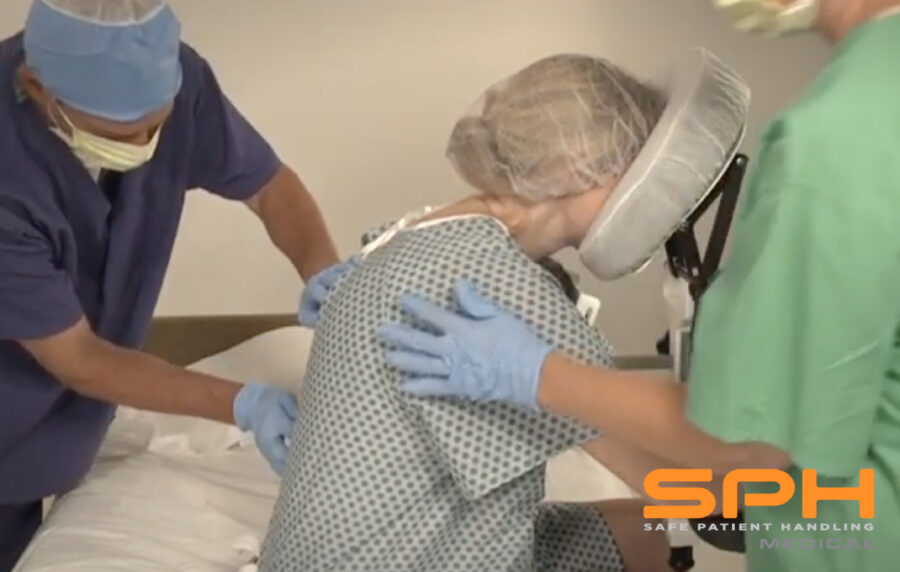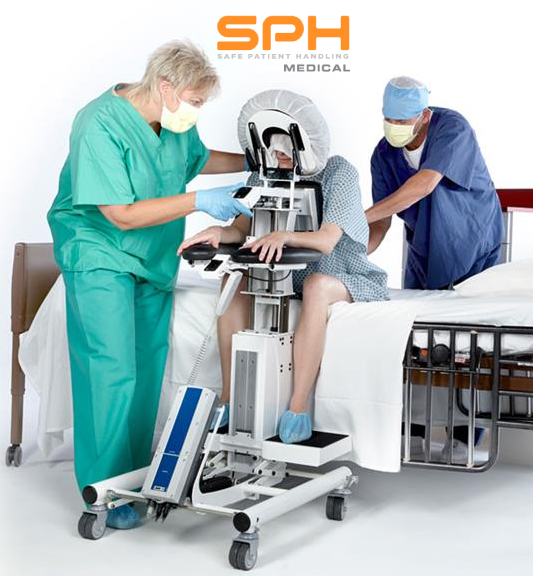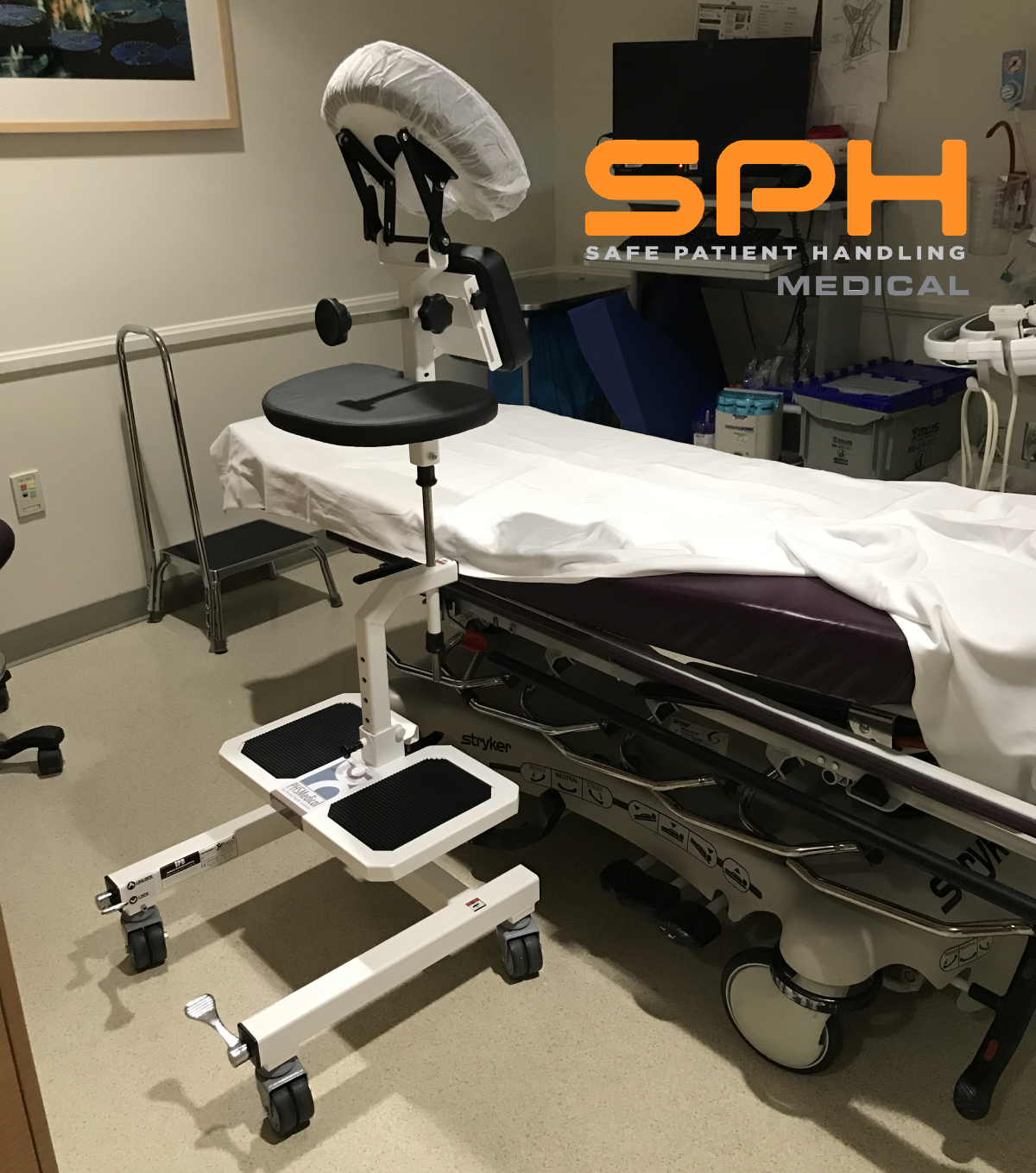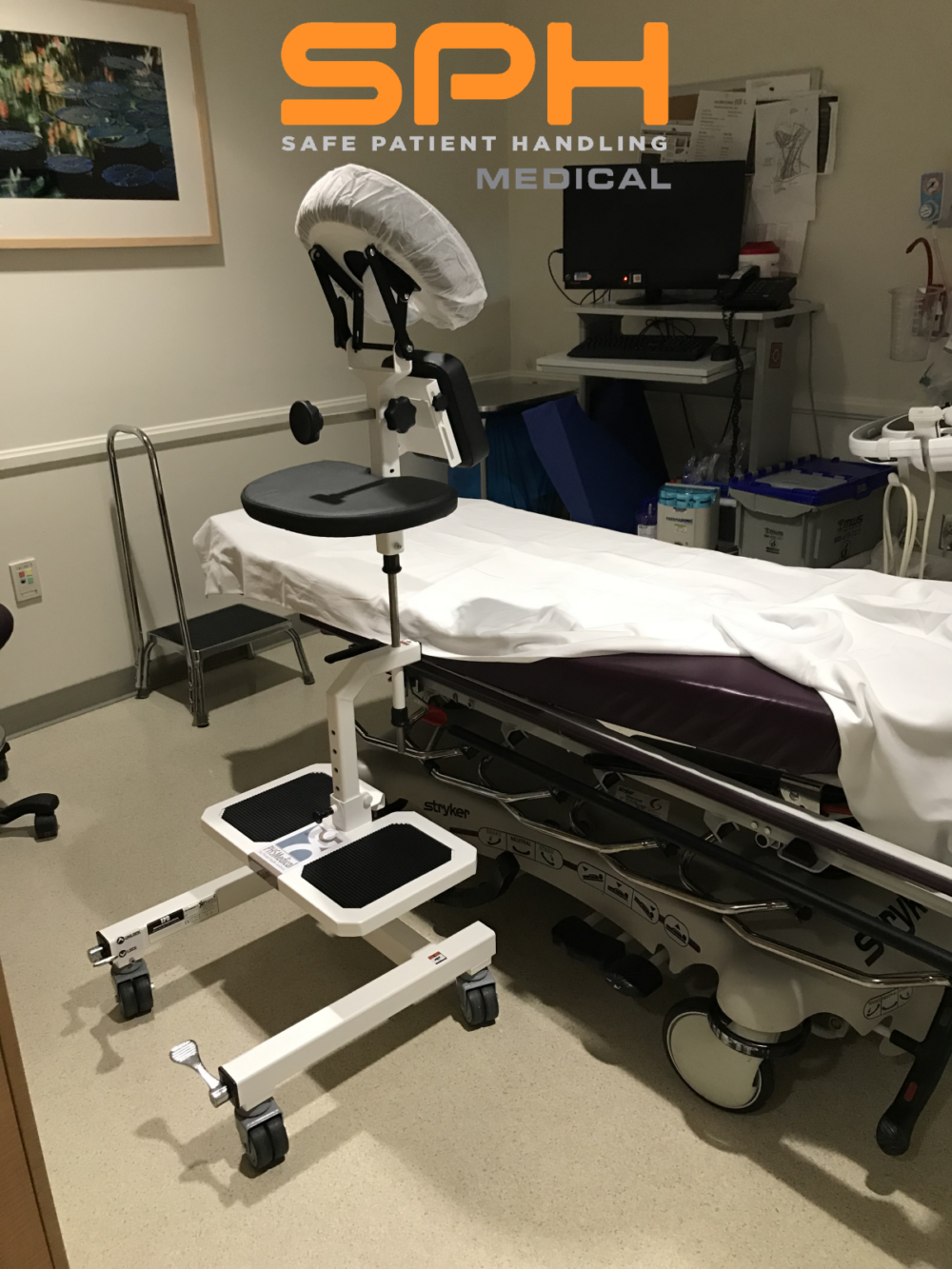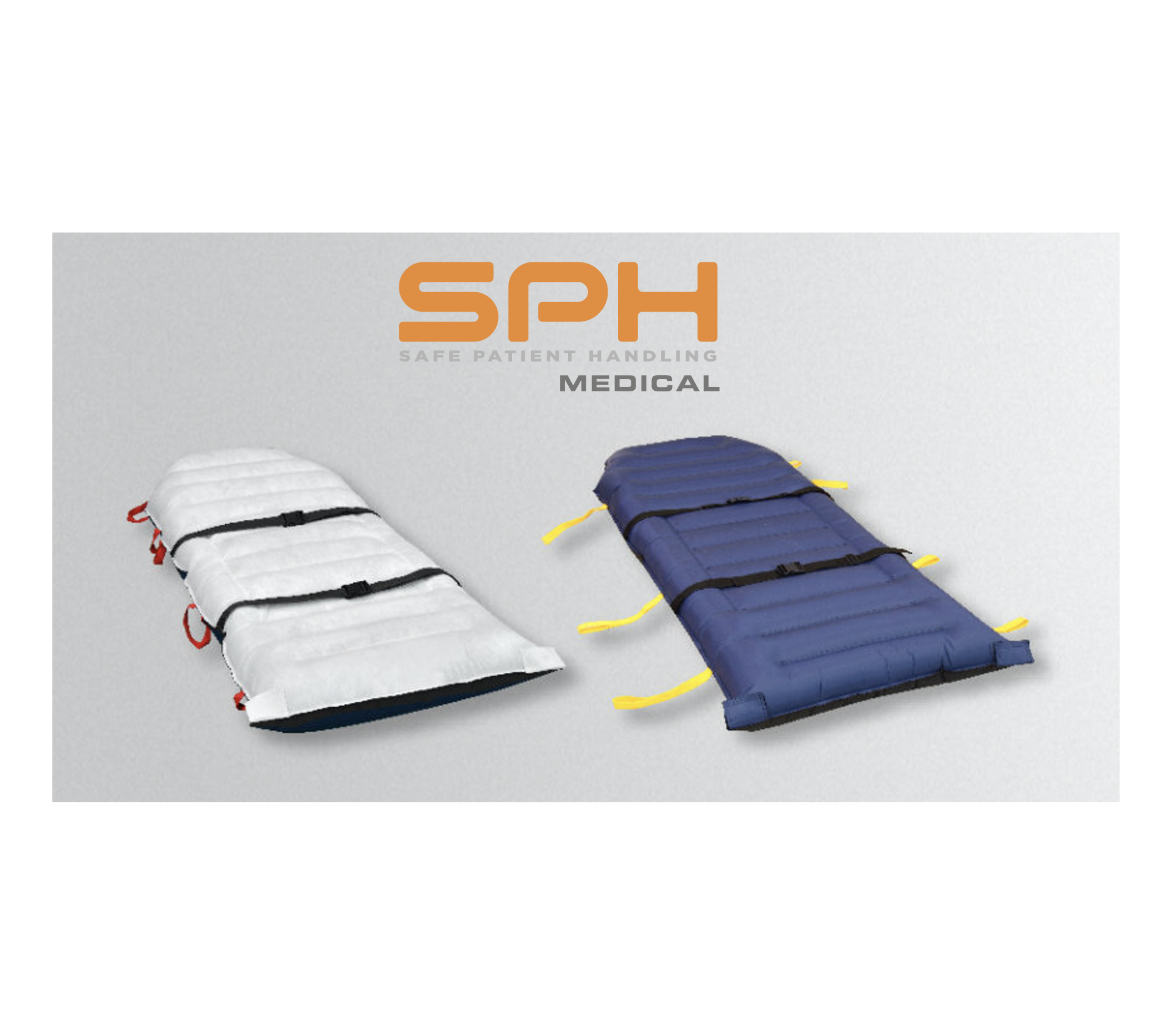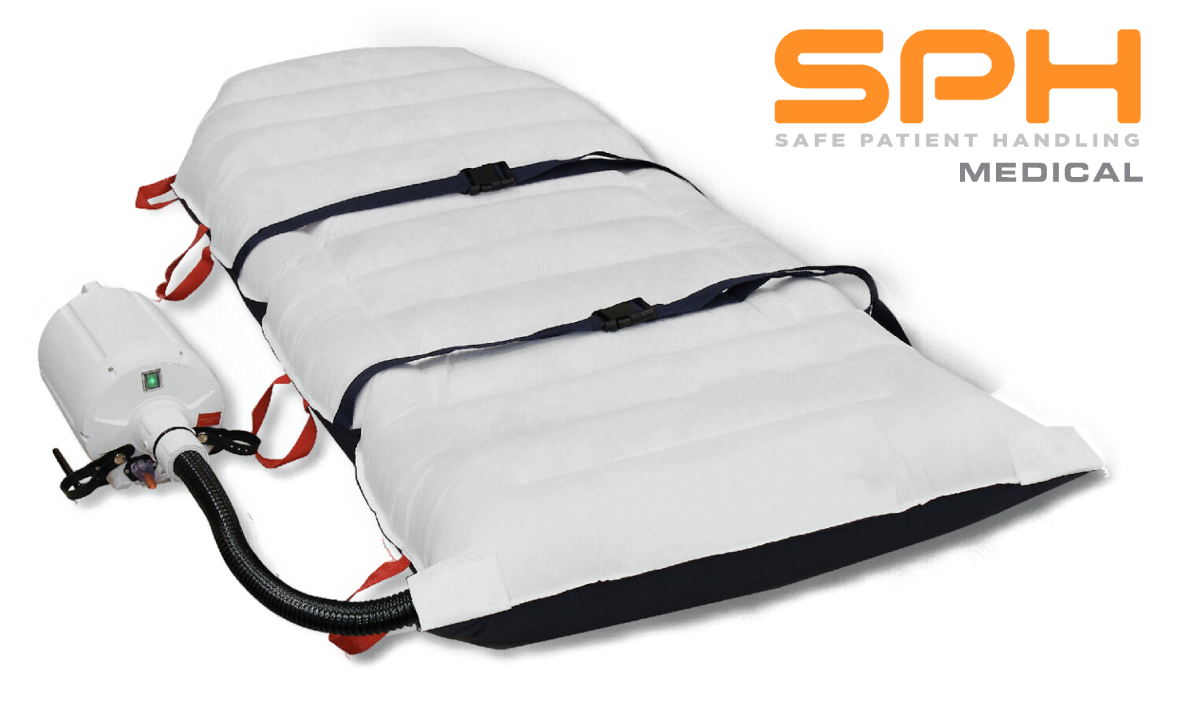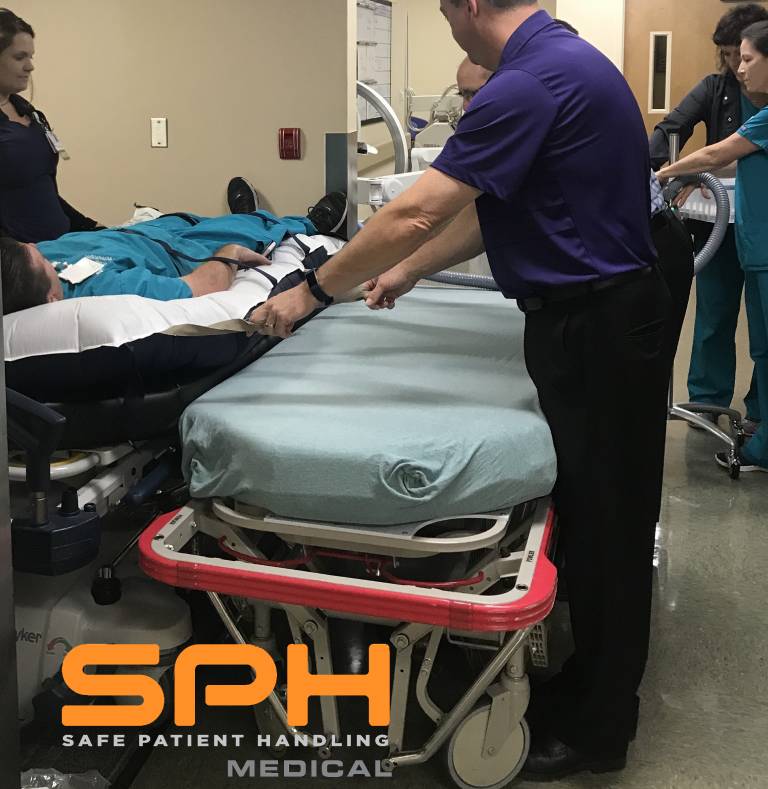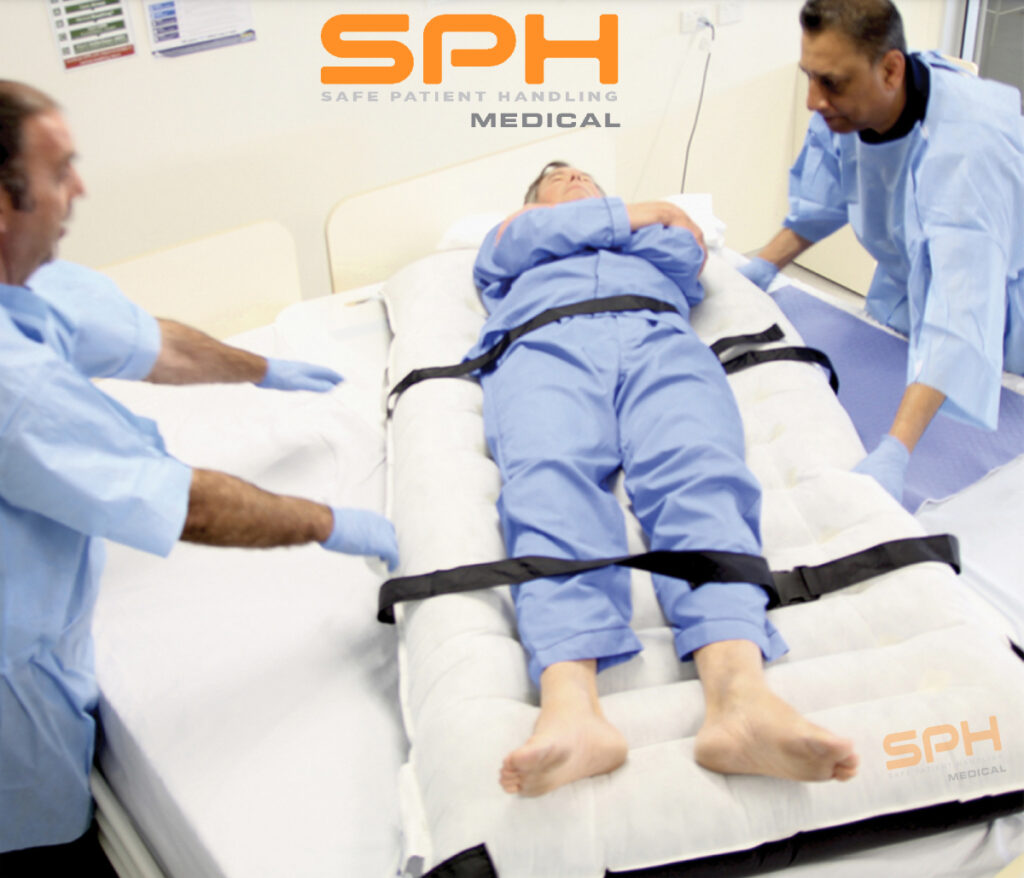The gold standard of Safe Patient Handling today is the single patient use Air-Assisted Lateral Transfer Matt. This article will provide some background about the daily risks faced by nursing staff when handling patients and the growing trend to implement Safe Patient Handling programs that include the SPH Medical Lateral Transfer Matt.
Medical Professionals Carry Out Dozens of Lateral Transfers Per Day
Though caregivers and medical professionals carry out dozens of lateral transfers per day, this procedure is still far from perfect. In other words, while this practice is commonplace in hospitals, it poses serious risks and challenges. Simply put, lateral transfers involve moving a patient from one surface to another. Since several departments are tasked with performing lateral transfers, countless professionals are susceptible to a nursing injury or repositioning injury. Patients are equally vulnerable to these injuries, which is why lateral transfers are notoriously precarious.
When performing a traditional lateral transfer, nurses reposition patients using the sheet that’s underneath them. However, if there’s limited personnel, this isn’t a viable option. To compensate for insufficient manpower, a plastic board is used to streamline the process. Unfortunately, this approach leaves a lot of room for error, making it inefficient and unpredictable. In essence, if there isn’t enough manpower or resources available, affairs become exceedingly dangerous. After all, patients and caregivers shouldn’t have to rely on their physical abilities to oversee successful lateral transfers.
Lateral transfers are so unsafe that medical professionals are 31 percent more likely to experience musculoskeletal pain. Pain is often a sign of some injury that has occurred and should not be ignored. With the repetitive nature of lateral transfers and the fact that patients are continuing to get heavier, nurses, techs, CNA’s and transporters are all at risk of a severe back, neck or shoulder injury which may be career ending. Additionally, these handling injuries are emotionally and financially draining, causing both medical professionals and hospitals distress. If a patient or caregiver has been seriously injured, hospitals could pay hundreds of thousands of dollars to cover medical expenses. Sound like motivation? To prevent caregiver injuries, physical discomfort, and to avoid significant financial losses, laws have been passed to improve these practices. Yet, additional efforts need to be made to keep nurses and patients out of harm’s way.
To expedite the adoption of Safe Patient Handling practices, the Bureau of Labor Statistics conducted a study surrounding Safe Patient Handling programs. According to their research, hospitals that employ proven lateral transfer procedures with the appropriate assistive devices, including an Air Assisted Lateral Transfer Matt, are 73 percent less likely to subject patients and nurses to handling injuries. This study served as a catalyst for the Nurse and Health Care Worker Protection Act. The House introduced this bill in 2015, and it requires the Department of Labor to improve patient handling, mobility, and injury prevention standards so that fewer transfer and repositioning injuries occur.
Improving Safety with the Lateral Transfer System
In the hopes of breathing improved safety, efficiency, and security into lateral transfers, air-assisted systems were created. AirPal birthed this invention, but other brands have developed their own versions of this modern device. HoverMatt, for example, manufactures air-assisted systems, and their business has expanded exponentially after developing the disposable or single patient use transfer mattress. Not only do air-assisted systems reduce friction, but they also provide added support and comfort. As a result, it’s easier for nurses to boost, reposition and transfer patients, making everyone less vulnerable to strains, sprains, and career ending back injuries. At SPH Medical, we make this equipment easily accessible so that more hospitals can implement safe patient handling wherever lateral transfers and positioning is occurring. With more than 15 years of experience implementing Air Transfer Systems, the team at SPH Medical offers expertise in this area to its customers. SPH Medical offers a complete line of single patient use Air Transfer Mattress options and reusable Air Transfer Mattress options in all sizes compatible with the most common air supplies on the market.
Assisted Transfer Equipment: Is It Worth It?
Air transfer equipment is preferred for its ability to reduce risk of injury and the fast adoption rate by nursing staff. Luckily, the perks don’t end there. In addition to promoting optimal safety, air-assisted systems also make patients more comfortable. Without air transfer equipment, lateral transfers can cause significant discomfort. For patients of size, they may feel embarrassed that so many people have to be involved in a lateral transfer just to move them. The air-assisted lateral transfer matt gives the patient a sense of dignity. Air-assisted transfer systems do an excellent job of eliminating risks and uncertainty, which is why this equipment is an efficient alternative to old fashioned manual handling practices.
Best of all, patients say that the air transfer matt offers a floating sensation. With that said, it’s evident how much this equipment streamlines the patient transfer process and improves patient throughput in busy departments like the OR and Labor and Delivery. Above all else, when caregivers have the tools they need to ensure patient safety and their own safety, it bodes well for a pleasant experience for all including increased patient satisfaction. Thanks to air-assisted systems, gone are the days of risking a back or shoulder injury while repositioning patients. Instead, you receive a safe and efficient solution to reduce lateral transfer risks.
Contact SPH Medical to get a quote for the Air Assisted Lateral Transfer Matt and realize the benefits of Safe Patient Handling today.

